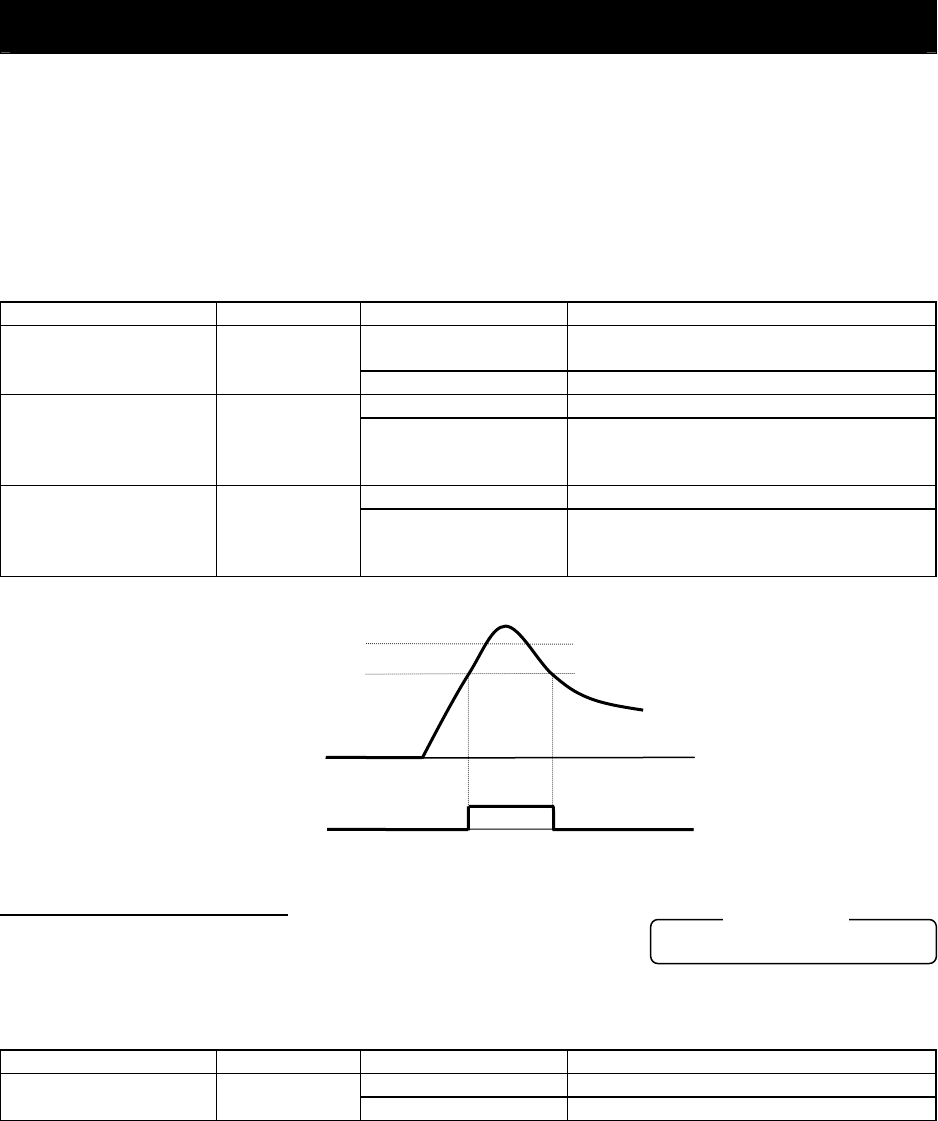
Chapter 4 Explanation of Functions
4 - 40
(2) Overload nitice function
The overload notice function allows you to make the inverter output an overload notice signal before
tripping because of overload.
You can use this function effectively to prevent the machine (e.g., a conveyor)driven by the inverter from
being overloaded and prevent the conveyor from being stopped by the overload protection of the inverter.
To use this function, assign function "03" (OK) or "26" (OL2) to one of the intelligent output terminals [11] to
[15] (C021 to C025) and the alarm relay terminal (C026). (Two types of overload notice signal are available
for output.)
Item Function code Data or range of data Description
00
Enabling the warning output during
acceleration, deceleration, and constant
Overload signal output
mode
C040
01 Enabling the warning output during constant
0.0 Disabling the warning output
Overload level setting C041
0.1 to "2.0 x rated
current" (A)
Specifying the current at which to output the
OL signal (overload notice advance signal
(1))
0.0 Disabling the warning output
Overload setting (2) C111
0.1 to "2.0 x rated
current" (A)
Specifying the current at which to output the
OL2 signal (overload notice advance signal
(2))
4.2.31 Overcurrent restraint
The overcurrent restraint function allows you to restrain the
overcurrent that can occur when the output current sharply increases
because of rapid acceleration.
You can enable or disable the function by setting the overcurrent suppression enable (b027).
Item Function code Data or range of data Description
00 Disabling the overcurrent restraint Overcurrent
suppression enable
b027
01 Enabling the overcurrent restraint
Note: When using the inverter for a lift, disable the overcurrent restraint function. If the overcurrent
restraint functions during the lift operation, the lift may slide down because of insufficient torque.
Overload restriction
setting b022/b025
Overload level setting
C041/C111
Output current
OL/OL2 output
b027: Overcurrent suppression enable
Related code


















